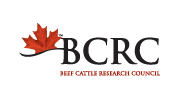Antibiotic resistance in bovine respiratory disease bacteria
| Project Code: | ANH.11.19 |
| Completed: | In Progress. Results expected in March 2022. |
Project Title:
Surveillance of antimicrobial use and antimicrobial resistance in Canadian feedlot cattle; expansion of bovine respiratory disease pathogen susceptibility testing
Researchers:
Sheryl Gow, Canadian Integrated Program for Antimicrobial Resistance Surveillance
Joyce van Donkersgoed (Alberta Beef Health Solutions), Steve Hendricks (Coaldale Veterinary Clinic), Calvin Booker, Sherry Hannon (Feedlot Health Management Services), Craig Dorin (Veterinary Agri-Health Services), Nathan Erickson (Western College of Veterinary Medicine), Grace Kuiper (independent epidemiologist)
Background:
The Public Health Agency of Canada’s (PHAC) Canadian Integrated Program for Antimicrobial Resistance Surveillance (CIPARS) has conducted antibiotic resistance surveillance in cattle entering packing plants and retail beef since the mid 2000’s and began surveillance for antibiotic use and resistance in feedlot cattle in 2019. Because PHAC is focused on human health, it concentrates on antibiotic resistance in bacteria that are found in the intestinal tract of both livestock and humans (e.g. E. coli, Campylobacter, Enterococcus). But feedlots use antibiotics to combat pathogens like the respiratory bacteria involved in bovine respiratory disease (BRD). Understanding the prevalence of and trends in antibiotic resistance in BRD bacteria is critical to informing responsible antibiotic stewardship in feedlot animal health programs.
Objectives:
The susceptibility test results from Pasteurella multocida and Histophilus somni isolates obtained from nasopharyngeal swabs of feedlot cattle at arrival and rehandling, will be incorporated into the larger CIPARS feedlot antibiotic use and resistance study objectives which will;
- Provide representative estimates of antibiotic use and resistance in Canada’s finishing feedlot sector,
- Provide a unified approach to monitor trends in antibiotic use and resistance over time,
- Investigate associations between antibiotic use and resistance periodically (on a targeted basis) based on emerging resistance trends, and
Provide collated industry data for the assessment of the potential public and animal health risk of antibiotic use in the Canadian finishing feedlot sector.
What they will do:
As well as antibiotic use records submitted by veterinarians from participating feedlots in Alberta, Saskatchewan and Ontario, finishing cattle will have manure sampled for organisms of interest from a human health perspective (E. coli, Salmonella, Campylobacter and Enterococci) as well as BRD (Mannheimia haemolytica).
This funding will expand the BRD antibiotic resistance testing to include Pasteurella multocida and Histophilus somni isolates collected at arrival and re-handling.
Implications:
Potential antibiotic resistance trends in BRD pathogens will help refine antibiotic use recommendations and practices at the veterinary and feedlot level. In addition, consumer groups, foodservice companies and international trade partners are increasingly interested in antibiotic use practices in livestock production. Solid, internationally reputable data are needed to independently verify antibiotic use practices in Canadian beef production.







